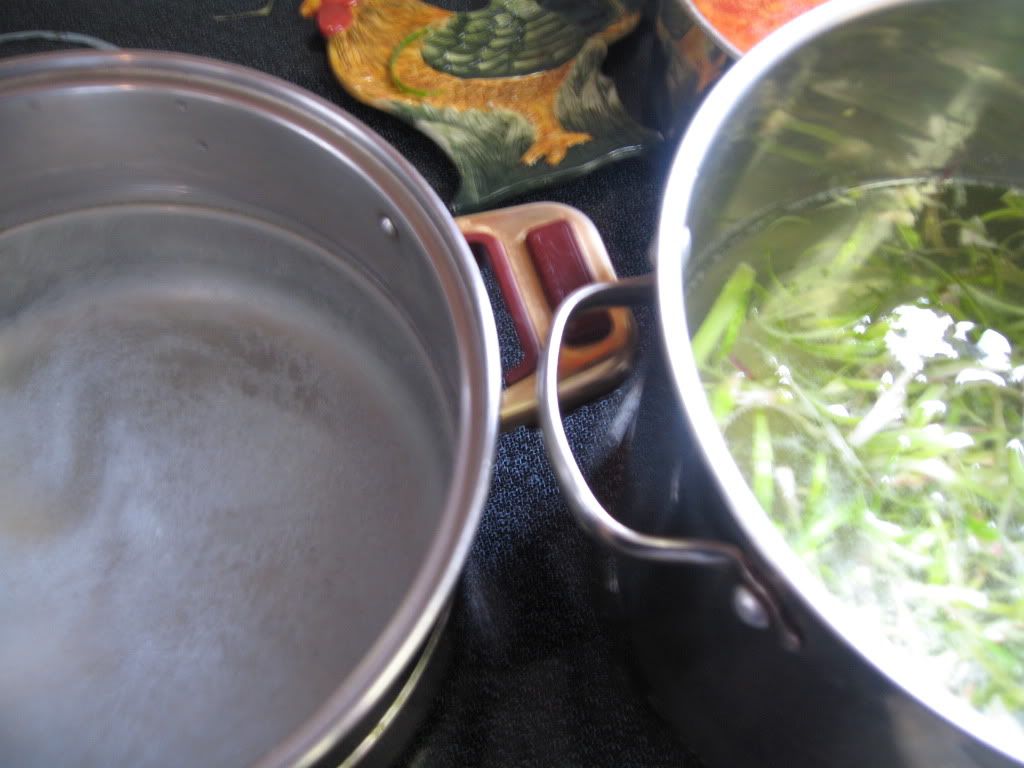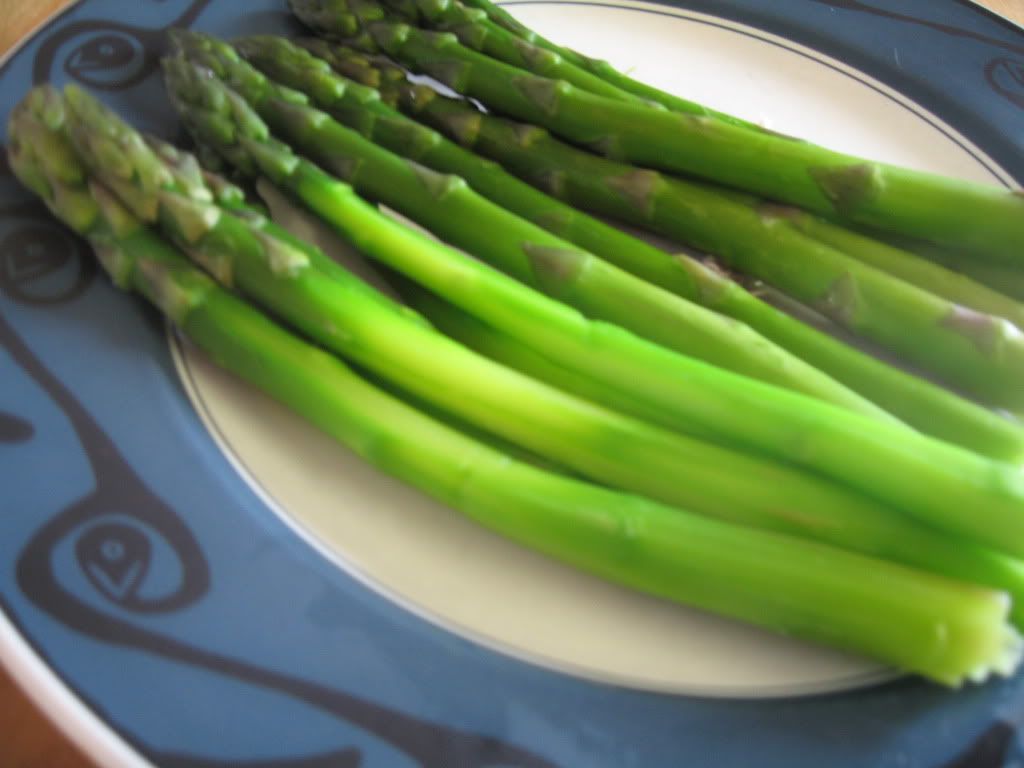I am doing a lot of cooking lately. Like, a LOT of cooking. Like, sleep, fap, work, cook, seriously. As a result of this kind of microscopic level of examination of food, and specifically the Book of Household Management, I am starting to ask a lot of questions. Why is a recipe written a certain way? Does it matter? Would X technique work better?

Due to the season, we have been eating a lot of asparagus. Beeton calls for peeling asparagus, which always seemed an overly-fussy way to present it or deal with woody asparagus, which, YUK. Beeton takes it one step further and instructs the reader to boil the now-nakey stalks with their peels. I don’t think anyone advocates for that nowadays.
It got me to thinking. Would it affect the taste? It was time for some ASAPARGUS SCIENCE! (IENCE-IENCE-IENCE)
I started with your typical pound bunch from the supermarket, not too big and not too leetle. I split them into four piles and trimmed the tough bases evenly. Two piles were peeled, and two were not.

The peels went into one pot per Beeton, and both pots were salted (1 tablespoon per 2 liters). I boiled them for precisely two minutes.

The results were interesting. We all agreed that the peeled ones were sweeter than the ones with skins on. The texture was a little like stewed cucumbers, but you could cut them with a fork, whereas a lot of the time I end up employing a knife too.

What was dicier was discerning between the ones that were boiled with peels and the ones with were boiled without. I think that the peeled ones boiled with peels were the sweetest. I like this. I will probably peel from now on unless they are tiny little whips.
“SCIENCE!”
